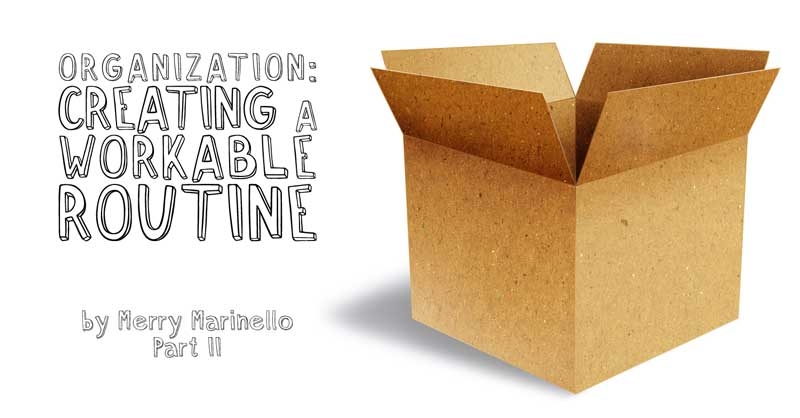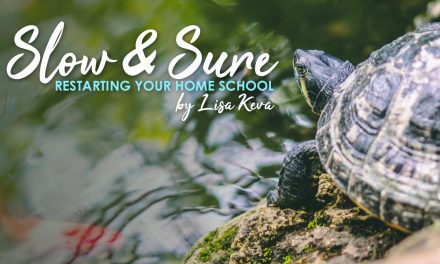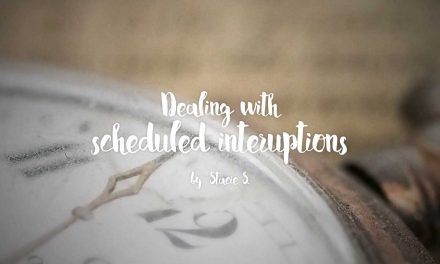Once I have prayed over and planned our priorities and passions and made a list of these, I next look at:
What other subjects would I like to cover?
and
Where is my time needed? What subjects can my child do independently or with minimal guidance, and which subjects require a lot of my one on one attention?
and
How long do I want my child to spend on each subject? If a curriculum lays out a “daily plan” I consider that, but I don’t take this plan as etched in stone. Sometimes a child can get through several lessons in a short time. Sometimes they need more than a day to really absorb one lesson. I like to come up with time limits and reasonable goals to structure my day, as well as taking into account natural breaking points in a text or book.
Subject times grow and change over the years. When they were little, 10-15 minutes was plenty for many subjects, and all their attention spans could handle. By high school, an hour is more appropriate for many subjects, though there may still be shorter times for some things.
I list out all of the subjects we’ll do, and decide how long to spend on each of them. Then I evaluate: Is that reasonable? Is it a slight step up from the previous year…or a huge leap? Is it all realistic? I pray through this process as well. Maybe some subjects don’t need to be done daily. This year my daughter is doing both writing and grammar, but only one of those two each day. In the early years I sometimes alternated history and science, rather than doing both subjects daily. I allowed 1-year curricula to last for 2 years (and loved the flexibility that afforded us to pursue field trips, areas of interest, days off to bake around the holidays, and so on).
Do you have too much planned? You may need to pray through it all again and scale back. Ask the Lord to guide you; He will. When my kids were little I thought we’d do composer studies and nature walks and art and spanish and music and… whew! The list I created was very long and not very realistic! I culled back, started with the basics, and got creative with the others. Maybe we could do art one quarter and composer studies another, and then only once or twice per week. Nature walks could take the place of science sometimes. Not every subject has to be done daily, weekly, quarterly, or yearly. Over the years my kids have tried many, many things, but not all at once; life is a marathon, not a sprint!
Once I have my list of subjects and activities and the time they’ll take, I start to put it together into a schedule. First I plug in the priority subjects, then the passions, then the rest. I take into consideration when I need to be working one on one with a student, and what our style is. Some moms like to teach math to everyone at the same time. My kids need quiet to concentrate, and since I can’t be in two places at one time, this approach doesn’t work for us. So, I think about what subject the other child can do while I work with one.
If a child struggles with math, that’s not a good subject to schedule during one on one time with another, even if math can be done independently. The likelihood of my being interrupted is high. Instead, a subject that rarely requires my help is a better choice. My 7th grader reads while I work one on one with her brother. My 9th grader reads history while I work one on one with his sister. In earlier years, sometimes the independent subject was playing with manipulatives or puzzles, independent reading (even if it was just looking at picture books), play dough or another easy craft, a chore they knew well, or even a quiet play-time in their rooms.
My rule has always been, don’t interrupt Mom’s one on one time with a child unless there is blood, broken bones, fire, or other serious harm to person or property! We’ve used workboxes for several years, and these make it easy for a child to go on to the next box and then ask me when that one on one tutoring time with the other is finished.
In the early years, I read to or did an activity with my little one first, then set her up on something to do while I worked with my older one. www.paulasarchives.com has lots of great ideas for toddlers and preschoolers. One of my daughter’s favorite activities when she was 3 was to stand on a chair at the kitchen sink and play with a sink full of water, some bowls, spoons, and measuring cups.
Once I have my schedule outlined–I know what one child can do while I work with another, I have a general flow to my day…then I put the kids’ workboxes together.
So, if you’re changing things up, play around with your schedule and routine this week.
Next week: Organization: Implementing a New Routine





